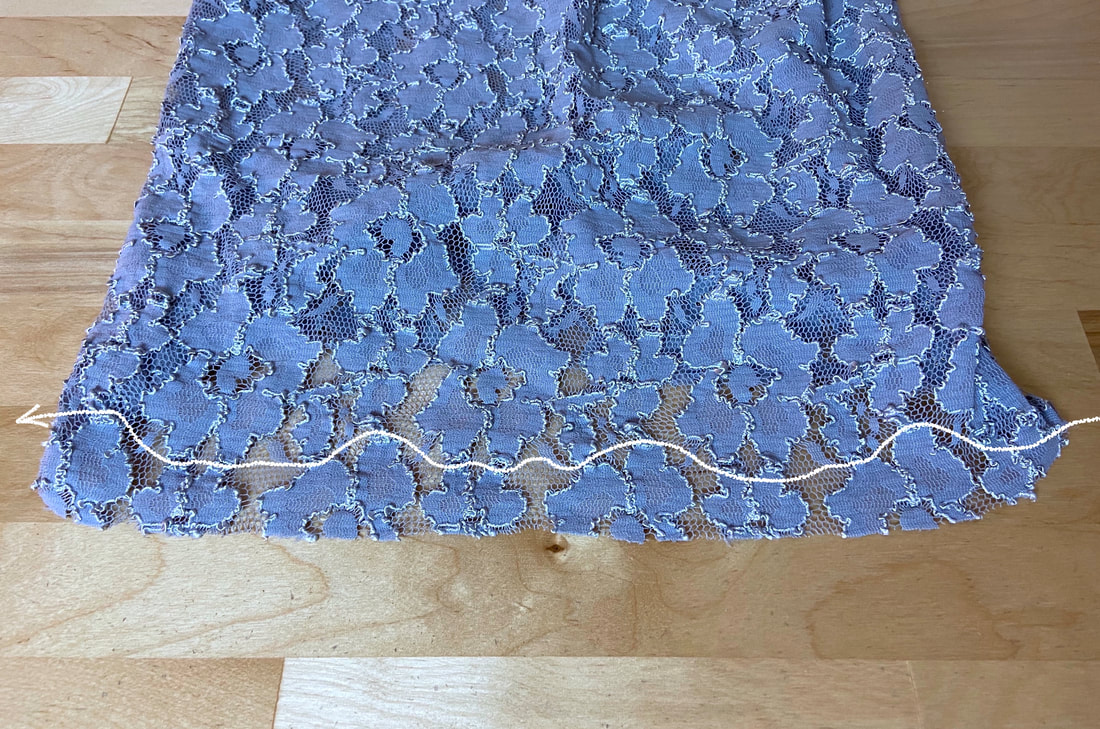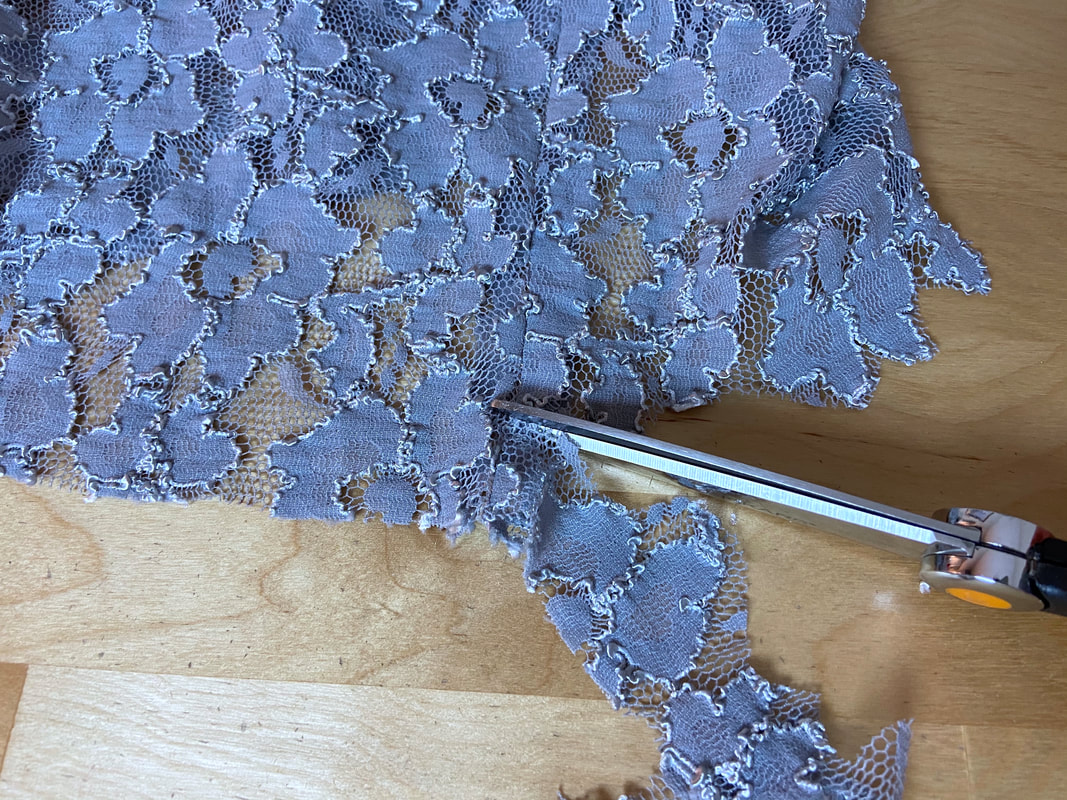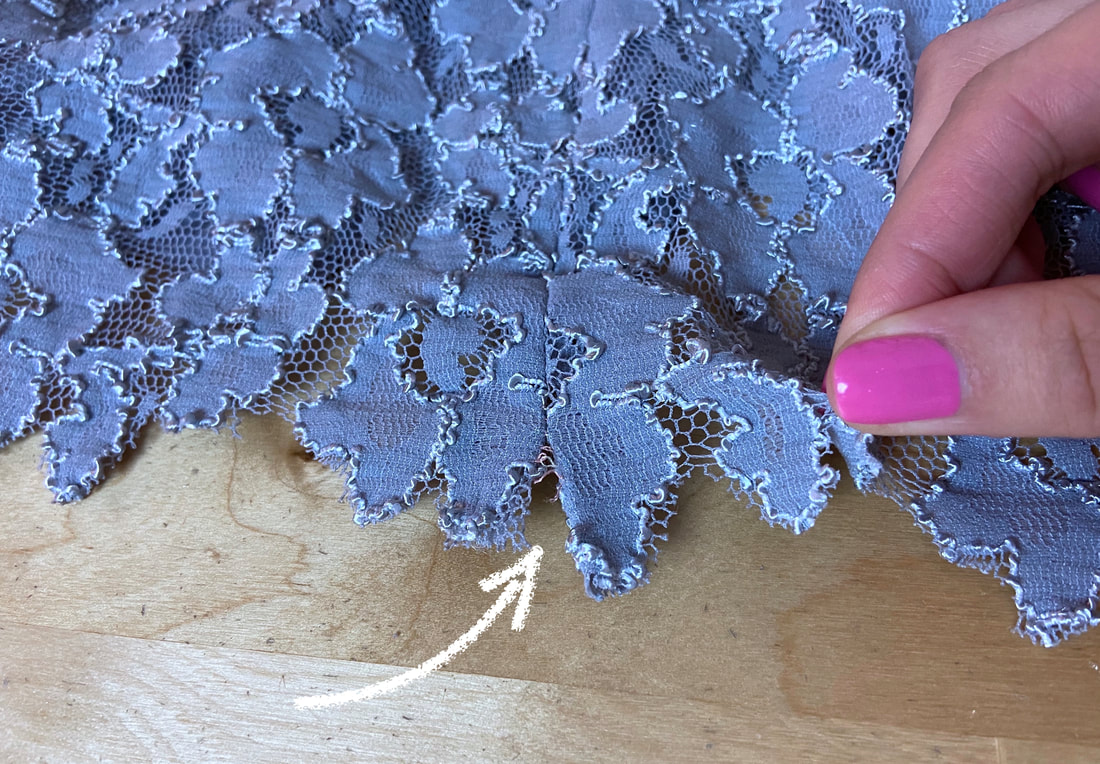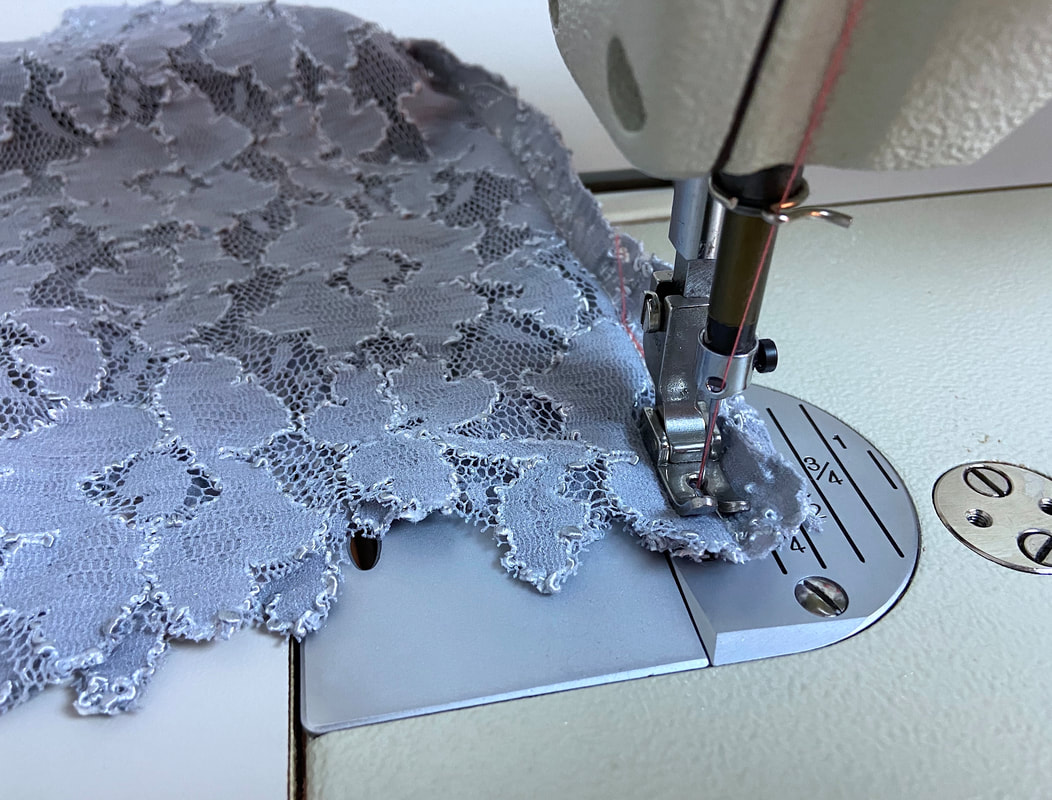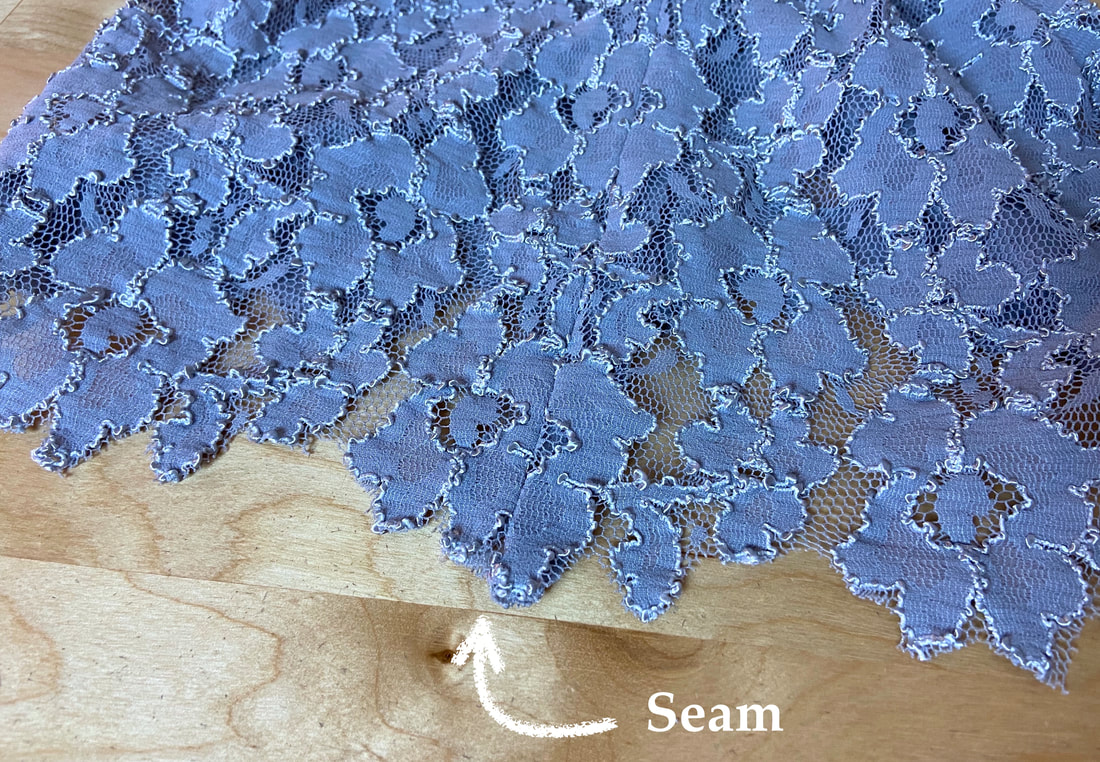Mini Tutorial: How To Trim-Finish A Lace Garment Hemline
While fast and convenient, trim-finishing a lace garment's hemline does not work with all lace fabrics. You can only use this technique if the lace has a continuous pattern with the elements densely positioned in relation to one another.
It is also important to be able to visually identify a line on the lace print that when cut, will result in an intentional-looking, clean edge.
It is also important to be able to visually identify a line on the lace print that when cut, will result in an intentional-looking, clean edge.
Trim-finishing works as a permanent hemming technique only because lace does not unravel when cut. The cut edges can safely withstand machine washing and longterm wear without the risk of fraying.
1. Start by visually identifying a pattern that would work well as your hemline. In this example, the lace fabric has a repetitive flower motif. The trimmed hem edge will correspond to the outline of the larger flowers.
You can use tailor's chalk to mark the general line, or simply keep this general line in mind as you trim around it in the steps to follow.
You can use tailor's chalk to mark the general line, or simply keep this general line in mind as you trim around it in the steps to follow.
2. Start trimming around your chosen lace pattern, being careful not to cut directly through the elements that will make up the finished trimmed edge. In this example, the lace is trimmed following the flower outline.
When arriving at a crossing seam, continue trimming around a lace line that you consider will blend best with the rest of the trimmed hemline. Trim until the entire hemline is complete.
When arriving at a crossing seam, continue trimming around a lace line that you consider will blend best with the rest of the trimmed hemline. Trim until the entire hemline is complete.
3. When trimming directly through a seam, the seam stitch will naturally start to unravel. As a result, it will need to be reinforced to ensure maximum seam durability.
4. Reinforce all the trimmed seams by stitching the seam at about 2"-3" from the bottom. Backstitch at the hemline to lock the threads.
The trim-finished hem should look clean and intentional, serving a semi-decorative purpose. All seams crossing into the hemline should be reinforced for strength and durability and blend naturally into the garment's hem.

